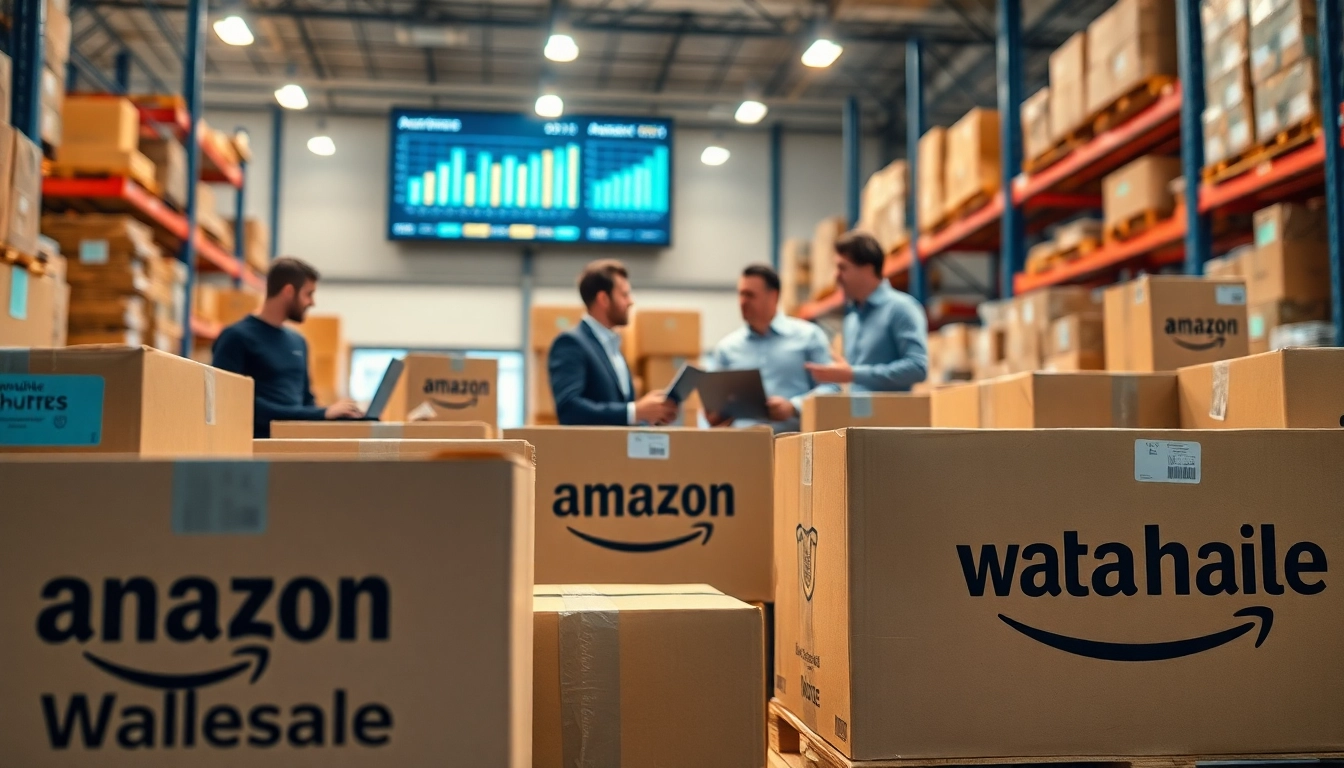Understanding Customer Loyalty Software
In today’s competitive business landscape, fostering and maintaining customer loyalty is essential for survival and growth. Customer loyalty software serves as a pivotal tool, allowing businesses to create, manage, and enhance their loyalty programs effectively. This software not only helps track customer interactions and purchasing behaviors but also aids in developing strategies to reward and retain customers over time.
What is Customer Loyalty Software?
Customer loyalty software is a system designed to facilitate the creation, execution, and management of customer loyalty programs. This includes tracking customer activities, engagements, and purchases within a business, allowing for effective monitoring of customer behaviors and preferences. The software often provides businesses with insights into consumer patterns, which can be leveraged for strategic marketing and rewarding initiatives.
Typically, these solutions are cloud-based and might integrate seamlessly with existing business systems such as ERP and CRM platforms, enhancing their functionalities without requiring extensive changes in infrastructure. Some notable examples include Smile.io, Yotpo, and Square Loyalty among others.
Benefits of Using Customer Loyalty Software
The implementation of customer loyalty software comes with a multitude of advantages for businesses looking to enhance their customer relations and retention rates:
- Increased Customer Retention: Building and maintaining loyalty programs can lead to increased customer lifetime value (CLV) as loyal customers tend to spend more over time compared to new ones.
- Personalized Customer Experience: Loyalty software enables businesses to gather and analyze customer data, allowing for personalized communications and offers based on individual preferences and behaviors.
- Improved Customer Engagement: Engaging customers via loyalty programs fosters a sense of belonging and connection to the brand, enhancing overall brand loyalty.
- Data-Driven Insights: Utilizing analytics and reporting tools within the software provides businesses with insights into customer behavior, helping to tailor future marketing strategies accordingly.
- Scalability: Most modern loyalty software solutions are scalable, meaning businesses can adapt and expand their loyalty programs as needed without significant investment in new technology.
Common Challenges and Solutions
While customer loyalty software can drive success, there are challenges organizations may face during implementation and management:
- Integration Issues: Merging new loyalty software with existing business systems can prove complex. To mitigate this, choose software that offers robust integration capabilities and support.
- User Adoption: Employees may resist using new systems. Invest time in training and clearly communicate the benefits of the software for both staff and customers.
- Data Management: Collecting and maintaining accurate data can be a struggle. Establish clear protocols for data entry and management to ensure data integrity.
- Measuring Success: Understanding program effectiveness can be elusive. Implement clear KPIs and regularly evaluate your loyalty program against these benchmarks.
Key Features to Look for in Customer Loyalty Software
Essential Tools for Tracking Customer Engagement
Effective customer loyalty software should include a variety of tools aimed at optimizing customer engagement. This includes:
- Reward Tracking: Ability to monitor points, rewards earned, and redemption rates.
- Customer Segmentation: Tools to categorize customers based on purchasing behaviors, preferences, and demographics.
- Engagement Metrics: Track interactions across different channels to assess customer engagement.
- Multi-Channel Support: Ensure customers can engage with your loyalty programs through various platforms, including mobile apps, in-store experiences, and online shopping.
Integrations with Other Business Platforms
For a customer loyalty program to be seamlessly effective, the software should integrate with other important business tools. Key integrations include:
- CRM Systems: Ensure your loyalty software can connect with your customer relationship management system for better data use.
- Point of Sale Systems: Integrating with POS systems can help track customer purchases and reward redemptions in real time.
- Email Marketing Platforms: This integration allows for targeted communication based on customer loyalty status and behaviors.
- Social Media Platforms: A direct line for promoting loyalty programs and engaging with customers where they spend their time.
Customization Options for Different Industries
Every industry has unique customer interaction and loyalty strategies. Therefore, choosing customer loyalty software with customizable options can be pivotal. For example:
- Retail: Customizable reward systems tailored to shopping behaviors and seasonal trends.
- Food and Beverage: Options to reward repeat visits through check-ins or frequent purchase discounts.
- E-commerce: Adaptations for online purchases, such as referral programs or special discounts for returning customers.
- Travel and Hospitality: Custom loyalty tiers based on spending levels, encouraging additional engagement.
Choosing the Right Customer Loyalty Software
Comparison of Top Customer Loyalty Software Providers
When selecting customer loyalty software, it’s vital to compare leading providers to find the best fit for your business. Consider factors like functionality, pricing, customer support, and user reviews. Notable providers include:
- Yotpo: Offers a range of loyalty solutions tailored for e-commerce.
- Smile.io: Focuses heavily on creating rewarding experiences, especially for Shopify users.
- Square Loyalty: Integrates directly with POS systems for tracking customer purchases.
- Fivestars: Aimed at small businesses with a user-friendly interface and effective rewards systems.
User Experience and Interface Considerations
The user interface and overall experience of the customer loyalty software play critical roles in its adoption by both employees and customers. Key points to evaluate include:
- Simplicity: The software should be intuitive and easy to navigate.
- Mobile Accessibility: Ensure that customers can access loyalty programs through mobile devices, enhancing their experience and engagement.
- Customization: The ability to tailor the dashboard and user experience to meet your business needs.
- Support and Resources: Availability of tutorials and customer support to assist with onboarding and troubleshooting.
Cost Analysis and Budgeting
Establishing a budget for customer loyalty software requires an understanding of potential costs and the return on investment (ROI). Consider the following factors when evaluating costs:
- Subscription Fees: Monthly or annual fees typically charged by cloud-based software.
- Implementation Costs: Expenses related to setting up the software and integrating it into existing systems.
- Maintenance and Updates: Potential costs for ongoing support and software updates.
- Training Costs: Investment in training employees to ensure a smooth transition and high adoption rates.
Implementing Your Customer Loyalty Program
Steps for Effective Launch and Rollout
The launch of a customer loyalty program should be strategic and well-planned. Key steps include:
- Define Goals: Establish clear objectives for what you want to achieve with your loyalty program.
- Develop a Customer Journey Map: Outline how customers will engage with your loyalty program from sign-up to reward redemption.
- Beta Testing: Launch a pilot program with a select group of customers to gather feedback and make necessary adjustments.
- Full Rollout: Provide a timeline and strategy for rolling out to all customers, ensuring adequate marketing support.
Training Staff on the New System
Effective training is crucial to ensuring your employees can utilize the new software fully. Consider the following tips:
- Hands-On Workshops: Conduct practical sessions where employees can interact with the software under supervision.
- Resource Materials: Provide easy access to documentation, FAQs, and video tutorials to facilitate continuous learning.
- Regular Check-Ins: Schedule follow-up training sessions and encourage feedback on any challenges faced while using the software.
Promoting Your Loyalty Program to Customers
Communication is key when it comes to promoting your loyalty program. Strategies for effective promotion include:
- In-Store Signage: Use eye-catching displays to inform customers about the loyalty program and its benefits.
- Email Campaigns: Send targeted emails announcing the launch and ongoing benefits of the loyalty program.
- Social Media Promotions: Utilize various platform features to promote rewarding incentives to customers.
- Word-of-Mouth Strategies: Encourage early adopters to share their positive experiences with friends and family.
Measuring the Success of Your Customer Loyalty Software
Key Performance Indicators for Loyalty Programs
To truly gauge the effectiveness of your customer loyalty software, monitoring key performance indicators (KPIs) is essential. Relevant KPIs include:
- Customer Retention Rate: Measure the percentage of customers who continue to buy from your business over a specified period.
- Average Revenue Per User (ARPU): Analyze how much revenue a customer generates on average.
- Reward Redemption Rate: Assess how many rewards are redeemed versus those earned, indicating engagement levels.
- Customer Lifetime Value: Calculate the projected revenue a customer will generate during their relationship with the company.
Customer Feedback and Iteration
Collecting and analyzing customer feedback is vital for continuous improvement of your loyalty program. Implement surveys to gather insights regarding:
- Customer Satisfaction: Assess overall satisfaction with the loyalty program through direct feedback.
- Desired Improvements: Understand customer suggestions for enhancing the loyalty experience.
- Engagement Levels: Gauge whether customers feel motivated to participate actively in the program.
Long-term Strategies for Sustained Engagement
To maintain high levels of customer engagement, consider these long-term strategies:
- Regularly Update Rewards: Periodically refresh rewards and incentives to keep the program appealing.
- Personalized Marketing: Use data insights to send individualized offers based on the customer’s purchasing history.
- Celebrate Milestones: Recognize and reward customers for reaching milestones within the program to encourage ongoing engagement.
- Community Building: Foster a community around your brand through events and social media interactions to deepen the emotional connection.















Leave a Reply